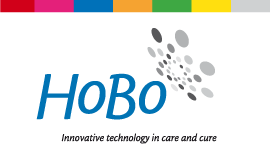Hobo focuses primarily on methods for the (improved) detection and – if possible – prediction of epileptic seizures. The quality of diagnostics and treatment will be improved greatly by better detection methods, making it possible to improve the quality of life for people suffering from epilepsy. Kempenhaeghe founded the EPISODE (EPIlepsy SOphisticated DEtection) programme in 2001. For this programme a steering committee discusses the policy and a working group focusses on treatment of individual patients, all exclusively aimed at improving the detection of epileptic seizures. Hobo participates in this programme and get involved in the technical development issues.
Up until now relatively little is known about the actual amount of seizures epilepsy patients suffer from. Optimization of diagnostics and treatment requires a sound understanding of the number and form of seizures. Certain types of seizures are very hard to detect visually, others remain unnoticed because they occur at night for instance. A substantial amount of people is incapable of communicating the onset or end of a seizure due to physical or mental limitation. Finally a group primarily consisting of small children and mentally challenged have an elevated risk of life threatening seizures caused by complications that accompany the seizure. It is essential to detect the epileptic seizures that cause the complications with these patients.
The current methods of detection are very limited and only seldom function satisfactory to the patient and treatment officer. For safety monitoring the most commonly used method is based on using sound causes by the patient. These systems also respond to sounds that haven’t got anything to do with an epileptic seizure. Also research at Kempenhaeghe has shown that only the minority of seizures is accompanied by sound. Movement detection devices that have to be placed under the mattress are often unreliable as well. The produce (a large amount of) false positives. Most of the available detection systems for epilepsy turn out to be largely invalidated.
In collaboration with Kempenhaeghe researchers Hobo develops high-quality seizure detection methods based on various physiological signals, e.g. the electrical activity of the brain (electroencephalogram or EEG), heart rhythm (electrocardiogram or ECG) or deviant movements (accelerometry). Another topic Hobo pursues is detecting complications with seizures such as a decrease in oxygen saturation in the blood or a disruption in the breathing pattern. An important goal for these developments is to achieve a higher positive predictive value and sensitivity than currently available systems. Higher-quality detection methods not only improve the quality of diagnostics and treatment, but can also have a positive effect on the peace of mind and freedom of movement for patients and the people who care for them. In this case technology can make a positive contribution to the quality of life. Applications are therefore foreseen in the environment of institutions, as well as at home.


